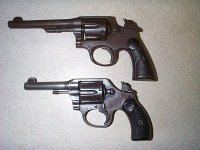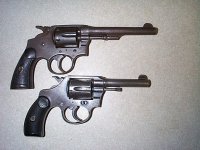jjmorgan64
New member
Does anybody know what this revolver is?
it is shown with a pocket positive for reference.
I picked it up for nothing at a flea market, and was curious as to what it was
The only markings are "spain" just behind the trigger guard,
"32 LO" on the left side of the barrel (32 S&w chamber very nice, have not shot it)
and serial # in the 18,000's on the bottom of the grip frame
as always thanks ahead of time JM
it is shown with a pocket positive for reference.
I picked it up for nothing at a flea market, and was curious as to what it was
The only markings are "spain" just behind the trigger guard,
"32 LO" on the left side of the barrel (32 S&w chamber very nice, have not shot it)
and serial # in the 18,000's on the bottom of the grip frame
as always thanks ahead of time JM



